A beauty with guts
Serving the Pennsylvania RR and its successors in the busy New York-Philadelphia/Harrisburg-Washington electrified region for 49 years, the streamlined, 230-ton GG1 was a beauty that could also slug it out on freight – a combination of homecoming queen and Rosie the Riveter.
With their short-term rating of 8,500 hp at low speeds and ability to produce a continuous 4,620 hp at 100 mph, GG1s hauled all types of trains under the PRR’s 11,000-volt, 25Hz catenary. These sleek locomotives pulled the Broadway Limited, the Silver Meteor, the Congressionals, Pennsy’s secondary passenger fleet, plus mail trains, time freights, and even coal drags.
The first GG1 was built by General Electric in 1934 during a design competition for a locomotive to replace the PRR’s class P5/P5a electrics, which were hard on the track. General Electric patterned its GG1 entry after the New Haven’s class EP3 passenger locomotives and the Cleveland Union Terminal electrics of the Pennsy’s chief rival, the New York Central System. That entry won the competition and the PRR GG1 was, well, off to the races.
Why call it a “GG1”? Because the Pennsy assigned each locomotive wheel arrangement a letter. “G” was used for 4-6-0s, thus a 4-6+6-4, 1st model, was a “GG1.” (If the Pennsy had purchased any Challenger steamers, they would have logically been GG2s!)
Production locomotives
The Pennsy split the orders for electrical equipment over the GG1’s eight-year production run between GE and Westinghouse, with the Pennsy assembling all but the first 14 production-model locomotives at its Altoona shops.
While the prototype had a riveted body, the production models had smooth, welded steel shells with five “cat’s whisker” stripes that were two of several modifications that industrial designer Raymond Loewy specified when he refined the GG1’s styling.
The first 57 locomotives had flat panels on their pilots; the remainder ad drop couplers, like those on the BLI model. The model has late-style m.u. hoses above the couplers, which were applied beginning in the mid-1950s (apparently starting with those locomotives in freight service).
During their Pennsy careers most GG1s wore the PRR’s locomotive dark green paint, first with five gold leaf stripes and later with one wide Dulux gold stripe. The Pennsy painted ten units Tuscan Red with five stripes after 1951 and two others Tuscan Red with a single stripe in the late ’50s; three units wore silver with black lettering and a single red stripe, to match the Congressional and Senator, for a short period in the mid-’50s.
Our sample has a smooth and cleanly molded metal shell, with evenly applied green paint and stripes that are remarkably crisp. They pass over the vents at the correct alignment and wrap neatly around the ends, neither of which is a simple task. The pantographs lay nearly as flat as the prototype’s in the down position. They’re made of round components, which match the prototype’s round tubing. A few details are molded into the shell, but most are separate add-on parts. The sound system’s volume control is located under a rooftop hatch that’s retained by a magnet.
Among the visual highlights of the model are the crisply detailed RP25-contour drive wheels, with their quill-drive and spoke detail. The wheels are shiny, but should be black. The pilots come with scale couplers mounted at the correct height in European-style NEM 362 draft-gear boxes. A pair of Kadee couplers is also supplied.
Like the prototype, the model’s frame is articulated at the center. The locomotive can negotiate an 18″-radius curve; however, BLI recommends a minimum 22″ radius. A switch under the roof hatch allows the locomotive to draw its current from either the rails alone or rails and catenary.
The digital sound system works in both direct current and Digital Command Control modes. The sounds are specific to the GG1, including the whine of cooling fans as it picks up speed.
Performance
Our sample GG1 delivered a smooth performance with a lot of great sound effects. On DC it took quite a bit of power (about 5 volts) to start the electronic system before the locomotive began to move at 9.5 volts. This control range can easily be reprogrammed to provide a wider range of speed control.
As I opened the throttle in the DC mode, the first response was an air brake exhaust followed by the sound of an air pump, then the headlight came on dim along with a cab interior light. As the locomotive began to move, the traction motor whine increased, cooling fans switched on, the interior light went off, and the headlight switched to bright. As the engine slowed down the sounds decreased in volume and ended with a slight brake squeal as the model stopped. Neat!
Our DC tests showed a speed range that topped out at 82.9 mph, which is a bit slow for a PRR passenger locomotive. The 123 mph it produced on DCC is more like the prototype’s top speed.
Note that our tests were run with the GG1 in its factory-set condition. The speed ranges and most of the other functions are adjustable as specified in the 28-page instruction manual.
The model’s 6-ounce tractive effort is equivalent to about 25 free-rolling passenger cars or 85 freight cars on straight and level track. That’s pretty close to what the prototype could haul.
Overall, the excellent lighting, sound effects, and performance Broadway Limited Imports has built into this model are what one would expect from a classic locomotive.
Price: $279.99 each
Manufacturer:
Broadway Limited Imports
P.O. Box 376
Ivy, VA 22945
www.broadway-limited.com
Description:
Plastic and metal ready-to-run heavy electric locomotive
Road names:
Nine PRR paint schemes are offered
Features
Die-cast metal body with cab interior
Directional constant lighting
Drawbar pull: 6 ounces (25 passenger or 85 freight cars on straight, level track)
Dual five-pole can motors with flywheels
Dual-mode automatic decoder for use on either DC or Digital Command Control
Dual-mode QSI sound system
Engine weight: 32 ounces
Optional pantograph pick-up
Minimum radius: 18″
Properly gauged NMRA RP-25 contour wheelsets





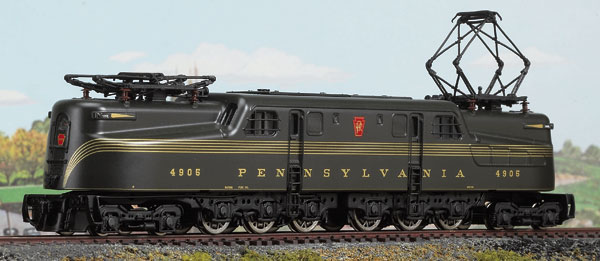
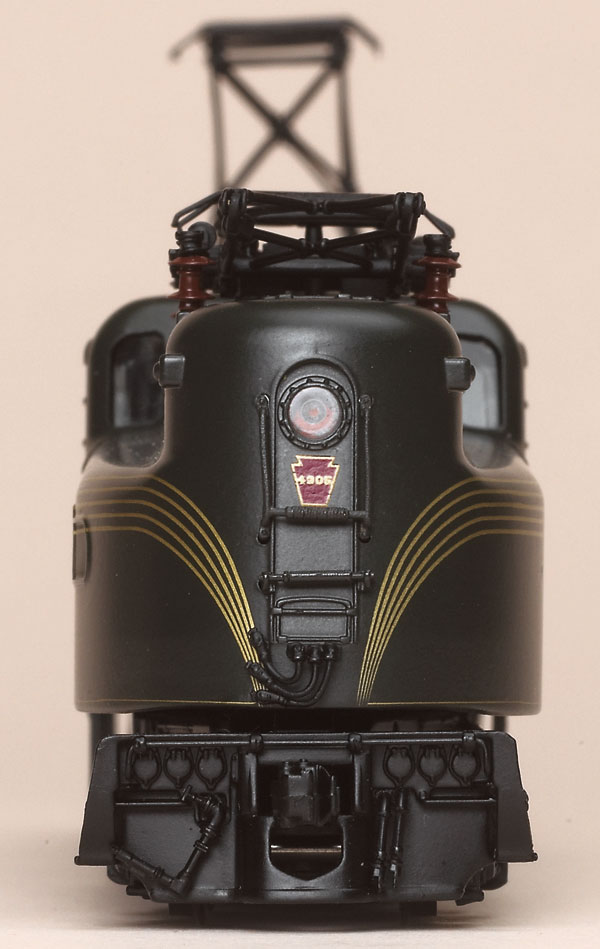
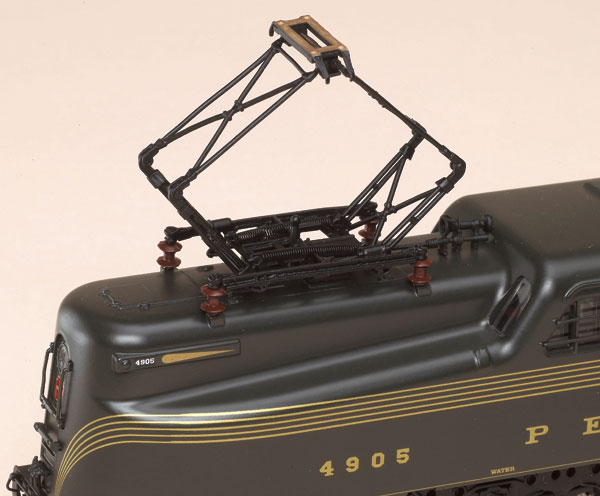

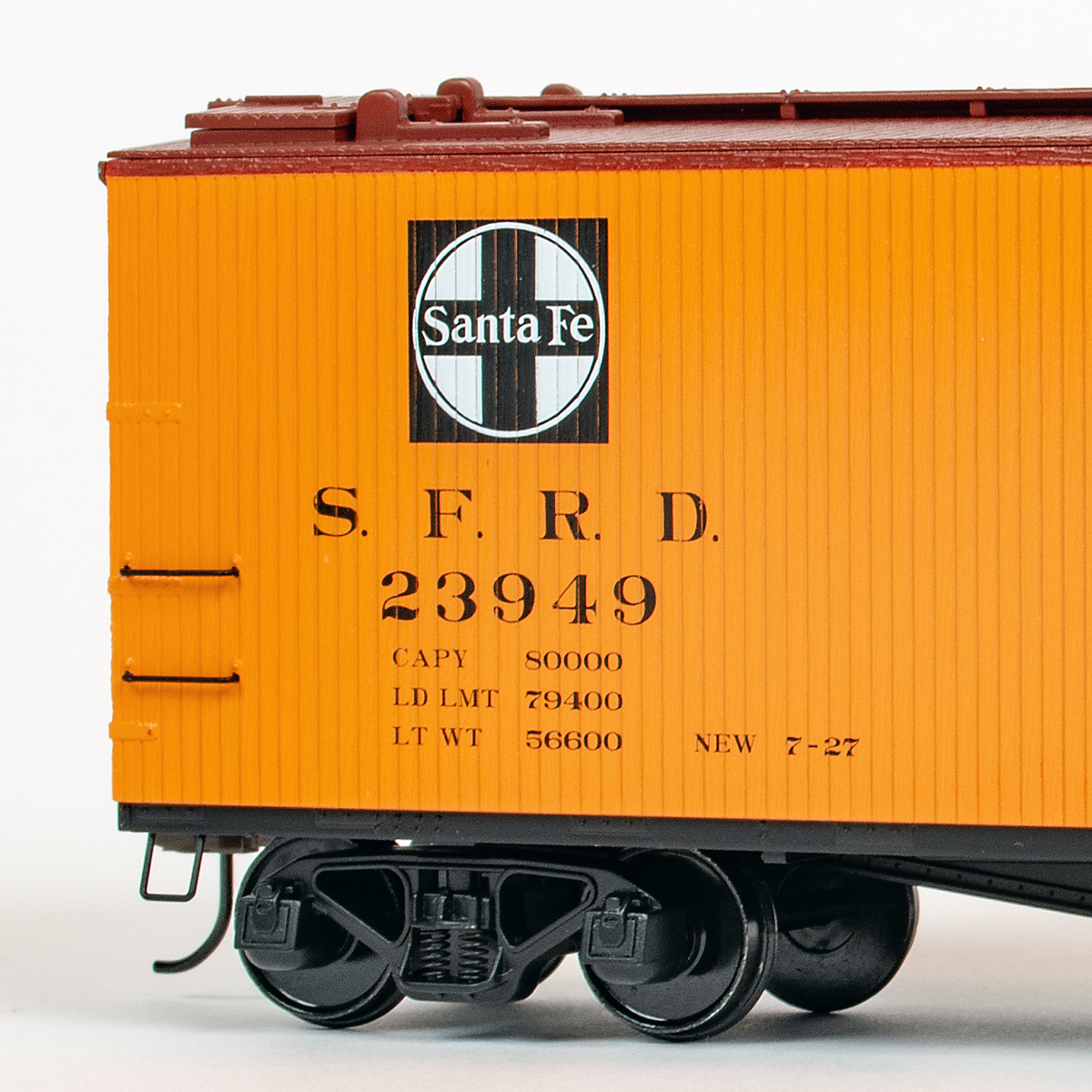
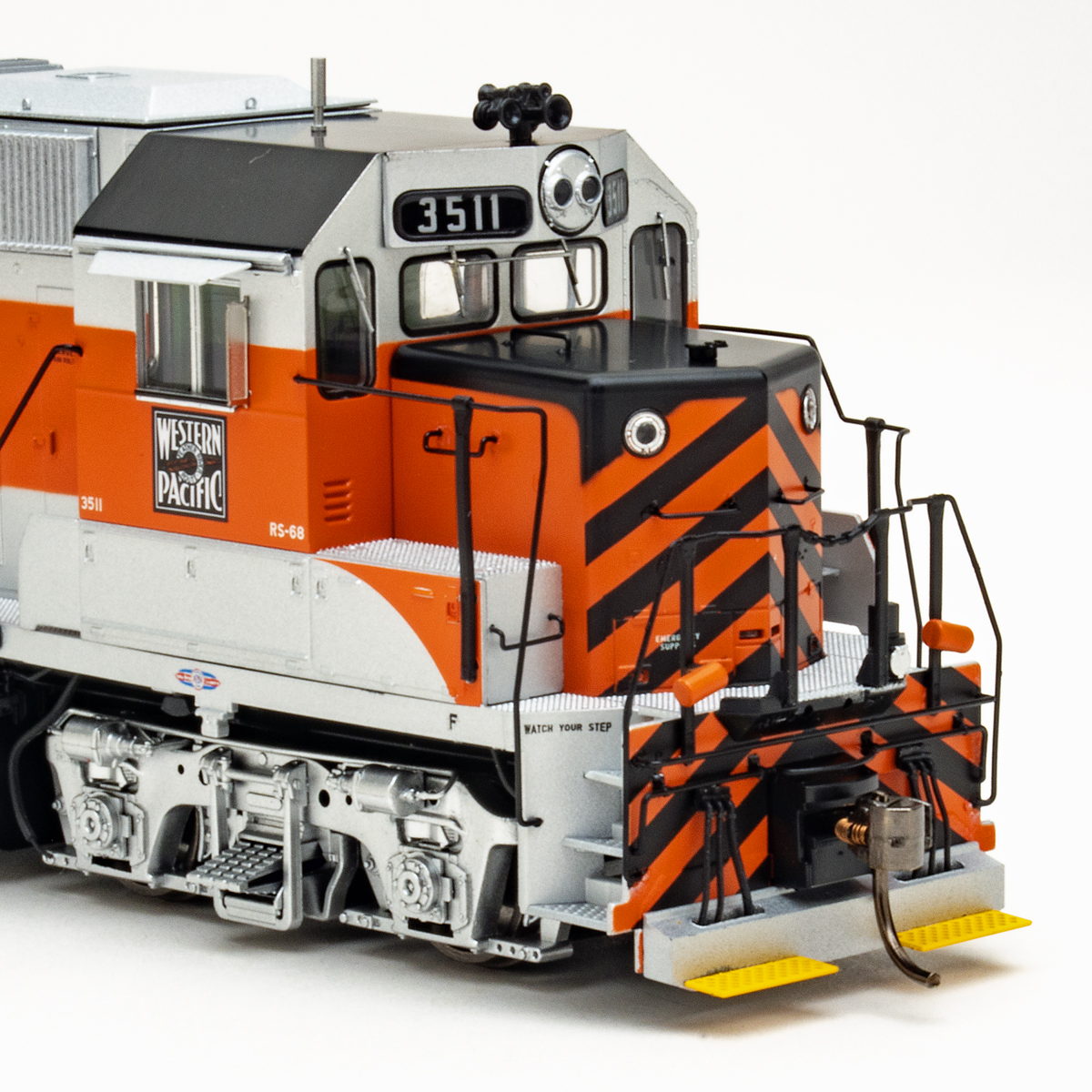
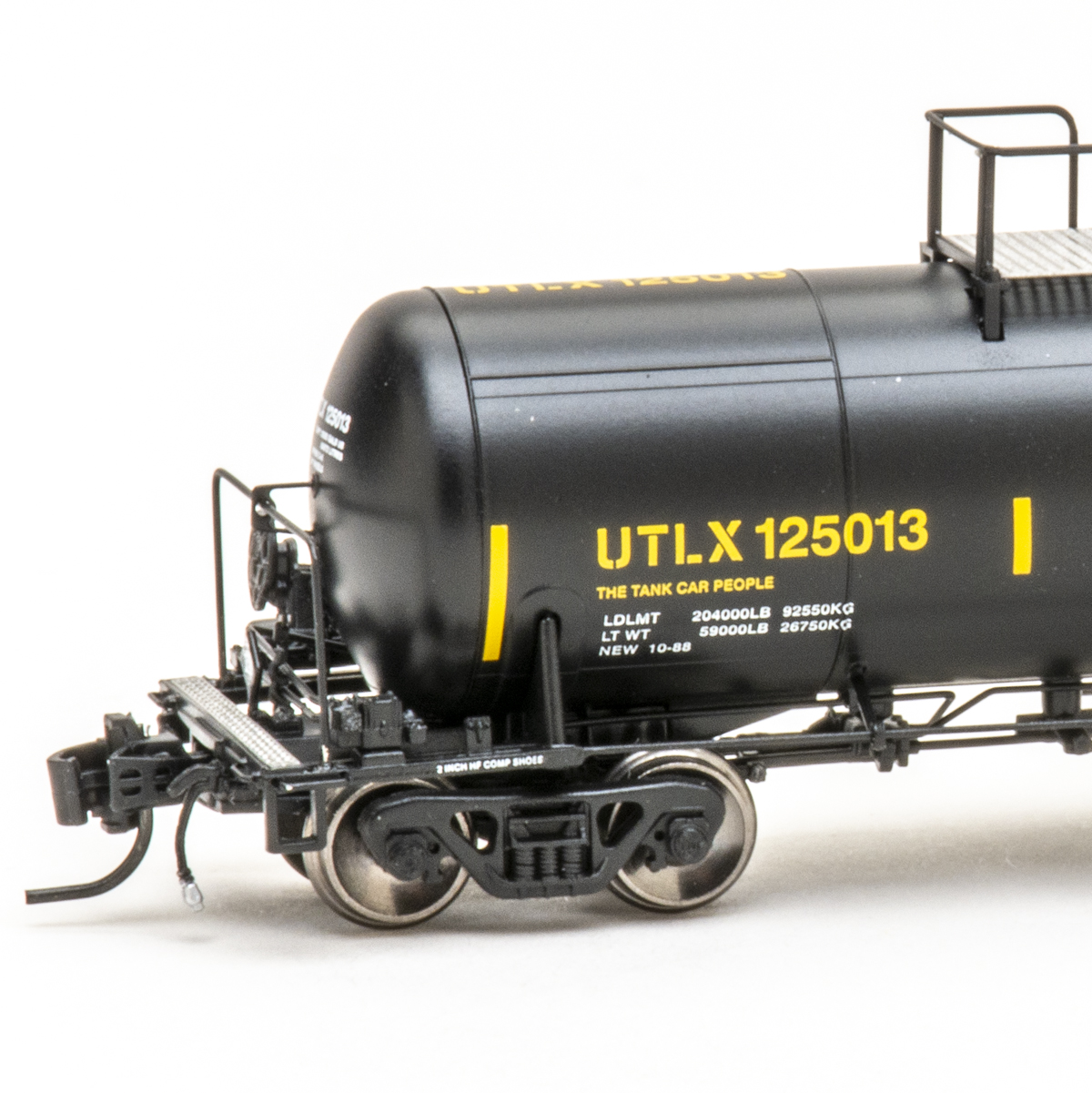
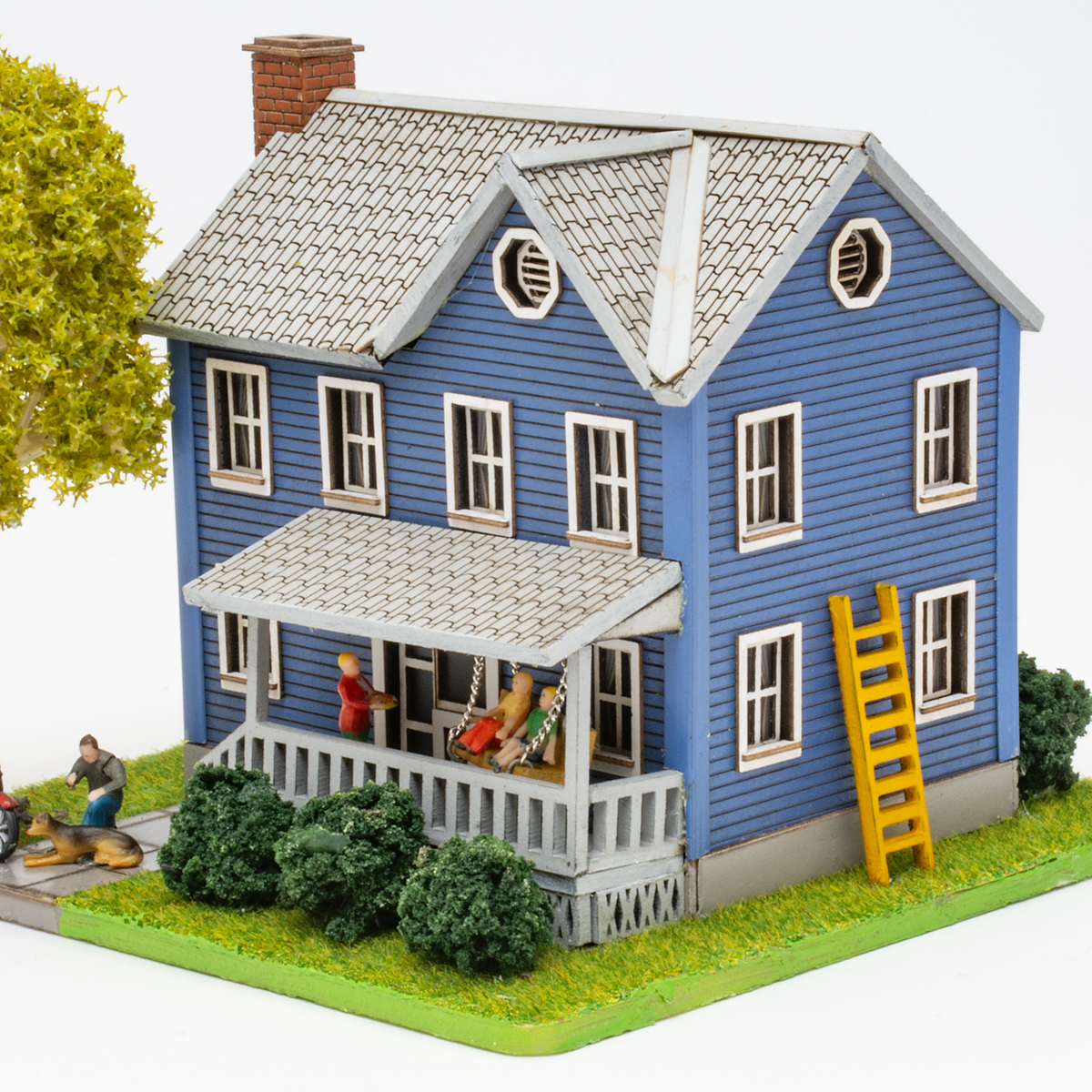




Another great locomotive, able to pull 12 Walthers Heavy Weight pass cars up 2% grade with no problem. Keep up the good work BLI.
Hi, my test of the locomotive is late. But this lady is grate. I have my great project, modelling Keystone at Lancaster in 76-78 years. Then this model is great. yes I'm creasy, live in Norway and than have to make models with this lady. I took the train between New York- Washington in 76, then I meet her. So now I will make a new meting in my basement.